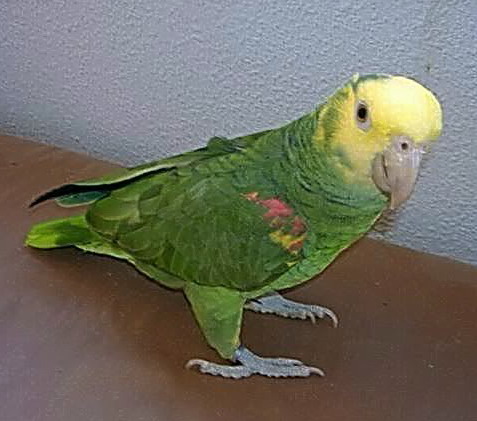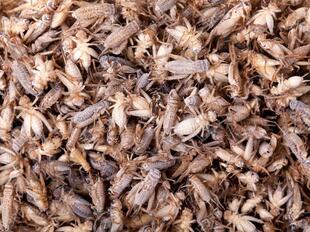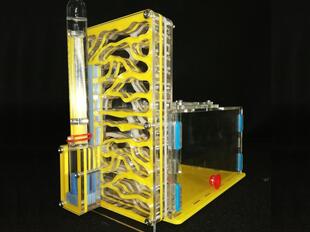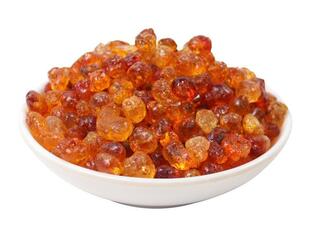
Yellow-headed amazon, or Yellow-headedparrot, or Double yellow-headedamazon(Amazona oratrix)
Phylum —chordata
Class — aves
Order — psittaciformes
Family — psittacidae
Genus – amazona
Appearance
The Yellow-headed amazon averages 38–43 centimeters (15–17 in) long. The shape is typical of amazons, with a robust build, rounded wings, and a square tail. The body is bright green, with yellow on the head, dark scallops on the neck, red at the bend of the wing, and yellow thighs. The flight feathers are blackish to bluish violet with a red patch on the outer secondaries. The base of the tail also has a red patch, which is usually hidden. The outer tail feathers have yellowish tips.
Habitat
Mexico is where most of this species lives, with additional, small populations living in the north east of Guatemala as far as the Honduras border, as well as in Belize.
Behavior
They are diurnal and are social parrots, living in flocks as large as several hundred individuals. They are beautiful, very intelligent and imaginative, and are easily tamed because they enjoy human company. These parrots are considered very good singers and talkers and are generally known as noisy birds. As with most parrot of this size, they can destroy many things unless they are redirected to chewing toys and natural, non-toxic branches, and learning tricks.
Diet
These birds are herbivores (frugivores and granivores), they feed on fruit, nuts, blossoms, berries and leaf buds. They will also raid cultivated crops like maize.
Reproduction
Yellow-headed amazons are monogamous and during the breeding season live in pairs which mate for life. Their nests are in hollow tree cavities. February to June is the breeding season. Usually there are two to three eggs per clutch, and incubation is by the female for a period of 26 to 28 days. Like many parrots, the male feeds the female by regurgitation while she carries out the incubation or feeds the young. The chicks leave the nest when they are 8 to 12 weeks old, and are reproductively mature after three to four years.
In captivity
The Double yellow-headed amazon can live up to 80 years of age, and needs an owner who understands the responsibility of caring for a bird with this lifespan.
The Double yellow-headed amazon is an athletic bird that likes to clamber around its given area, and it loves to fly if there is enough space. It is a strong bird that can be destructive; cage materials should be sturdy steel. Give your bird the largest cage that is practical and fill it with toys. At a bare minimum, a cage should be 3 feet square with a play gym on the top. Equip the cage with perches of various dimensions.
Make sure to provide this bird with toys that can be joyfully torn apart, such as items made from wood, leather, and acrylic. An obliterated toy equals success to a bird; it's satisfying to them. Without enough toys to shred, this bird may set its sights on furniture and other belongings. Challenging toys are a must for this bird: a bored Double yellow-headed amazon will quickly become a destructive one.
All amazon parrots thrive on social interaction, and they need it to remain healthy and happy. Neglected birds can become destructive and depressed, which can manifest itself in various physical and emotional problems. To establish and maintain healthy bonds, you must set aside time each day for one-on-one interaction. The Double yellow-headed amazon is capable of learning many words and phrases and is notable for learning songs, especially opera.
Allow the parrots to shower or soak in a birdbath at least weekly to ensure skin and feather health.
Amazon parrots are prone to excess weight gain, so they must be allowed daily exercise. To properly care for a Double yellow-headed amazon parrot, you should be able to give it a minimum of 3 to 4 hours of supervised outside-of-cage time per day. As with any species, regular exercise will allow the bird to burn excess calories and stretch its muscles; it also provides essential mental stimulation.
In captivity, a Double yellow-headed amazon needs a high-quality pelleted diet supplemented with seed mix and daily servings of fresh bird-safe fruits and vegetables. A varied diet will help ensure that your bird is getting the balanced nutrition it needs.
Feed approximately 1/3 to 1/2 cup of pelleted food and 1/3 to 1/2 cup of fresh fruits and vegetables daily. A raw and varied diet will help ensure that your bird maintains top nutrition. Make sure the bird is offered foods high in vitamin A; this bird is prone to deficiency. Calcium is also vital for the Double yellow-headed amazon parrot.
 Russian
Russian
 English
English


















